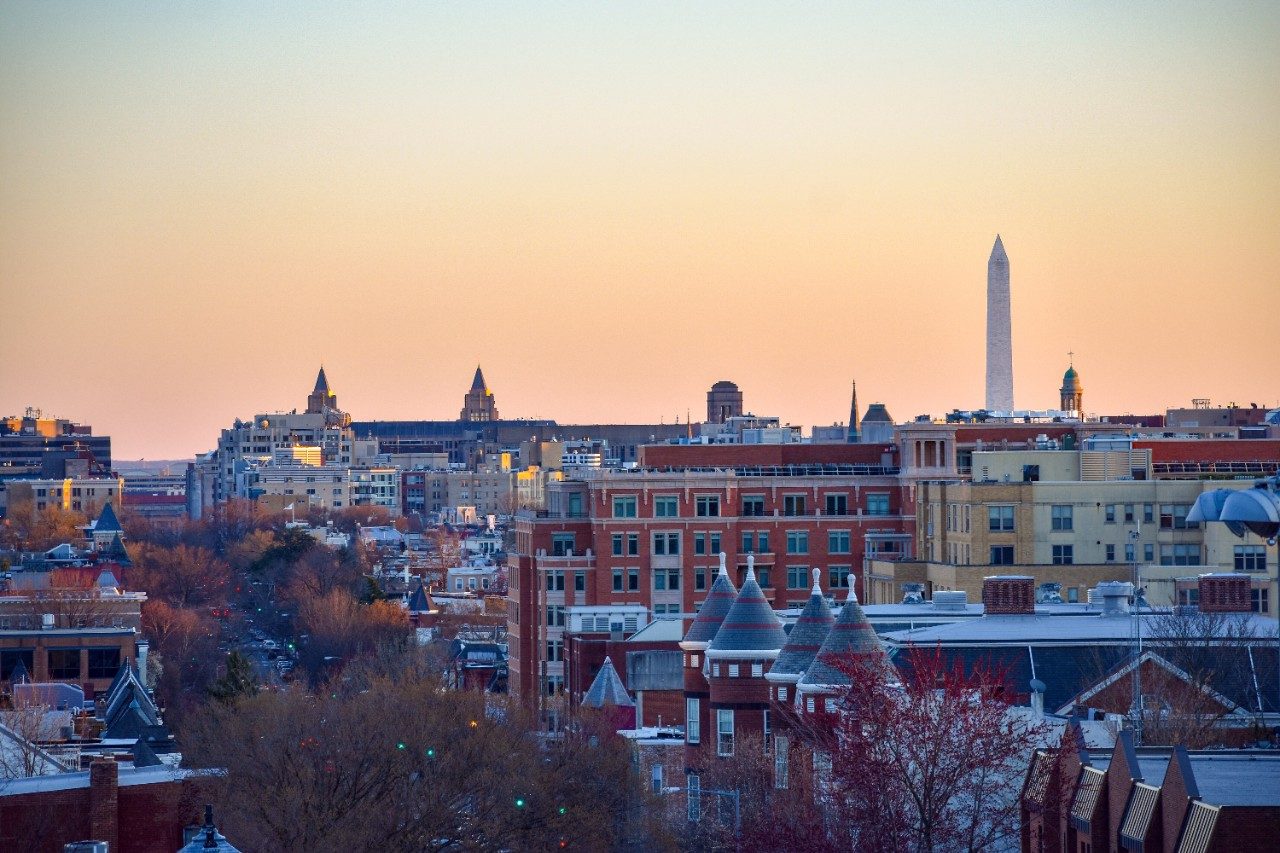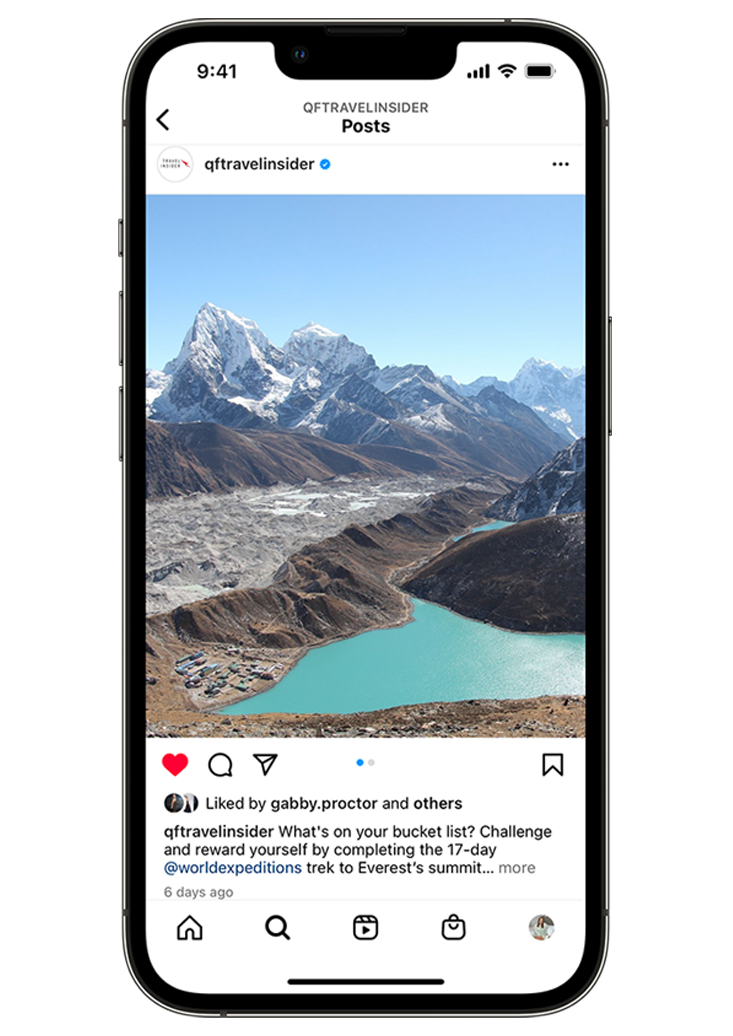How to Discover Another Side of Washington D.C.

Long seen as the staid capital where visitors look at things – the White House, the Lincoln Memorial, the Smithsonian – Washington, D.C. has kept its off-kilter charms well under wraps. We’ve lifted the lid on the US capital’s cool side – here’s our guide.
Explore Columbia Heights
This hip neighbourhood (pictured top) is the perfect place to kick off a tour of Washington, D.C.’s lesser-known attractions. On Sunday afternoons, Meridian Hill Park hosts an African drum circle; 11th Street NW has some of the city’s best bars and restaurants – don’t miss a late-night dance at the Wonderland Ballroom – and at the Mexican Cultural Institute, a 20th century mansion and former Mexican Embassy hosts art exhibitions, concerts and cooking classes.
Lincoln’s Summer Cottage

Abe’s cottage in northern D.C. was where the wartime president came in the heat of summer between 1862 and 1864. Guided tours help visitors imagine the “cottage” – actually a 34-room Gothic Revival mansion – when Lincoln was there. He found the cooling breezes and quiet a reprieve from the city, but he never stopped working: it’s reported Lincoln wrote the Emancipation Proclamation here in September 1862. The house is on the grounds of the Armed Forces Retirement Home.
140 Rock Creek Church Road NW
The Barbie Pond
A political statement using the medium of Barbie dolls, the Barbie Pond on Avenue Q is a DC one-off. Since 2014, an anonymous Barbie artist has been creating elaborate, timely installations – or as they put it in their Instagram bio, “lowering Logan Circle property values”.
Q Street NW
Capitalsaurus Court

Construction workers excavating a sewer at First and F streets SE in 1898 made a startling discovery: dinosaur vertebrae. The fragments were so few that designation was hard, but we do know they’re at least 100 million years old. In 1990, palaeontologist Peter Kranz called the dinosaur “Capitalsaurus” in an article and while it’s an unofficial name, it caught on and the site of discovery became Capitalsaurus Court. January 28 is Capitalsaurus Day and the dinosaur? It remains a mystery.
First and F streets SE
The Lincoln Book Tower
To honour the legacy of Abraham Lincoln, historians in Washington, D.C. gathered all the words written about the United States’ 16th president and created a tower of books 2.5 metres across and more than 10 metres high. It bursts up through the centre of a spiral staircase in the lobby of the Ford Theater Center for Education and Leadership, just across the road from Ford’s Theatre where President Lincoln was assassinated in 1865. There have been roughly 15,000 books written about Abe Lincoln – about 7000 of which feature in the tower. They’re not real, though: the tower books are replicas made from aluminium.
511 10th Street NW
The International Spy Museum

This museum has all the 007 gadgets you’re looking for: a German wristwatch camera; a lipstick pistol (known as the Kiss of Death) used by KGB operatives during the Cold War; and a 1922 silver dollar complete with suicide pin for CIA officers (in the event of capture, death was preferable to capture). The spring-loaded pin was coated in a lethal toxin.
700 L’Enfant Plaza SW
The National Museum of Health and Medicine
Look, we don’t know you so we’re not going to insist on this one. But maybe you’re just the type of traveller who’d pay to see a giant hairball, pictures of gruesome Civil War injuries (and even more horrific treatments) or the bullet that killed Abraham Lincoln, displayed with skull fragments still attached. The macabre, shudder-inducing and downright freaky: this museum covers all three areas admirably.
2500 Linden Lane, Silver Spring, Maryland
SEE ALSO: The Best Free Things to See and Do in New York
Heurich House Museum
This gothic pile appears somewhat forbidding – but actually, it’s a place of great good cheer. The Christian Heurich House, known as the Brewmasters Castle, was once home to Washington D.C.’s biggest beer brewer. Christian Heurich came to America from Germany with a knowledge of brewing and built himself a beer empire and a castle to match. His magnificent brewery was demolished but the grand Gilded Age home became a city landmark. Visitors can take tours – with beer in hand – and it regularly hosts beer-tasting events.
1307 New Hampshire Avenue, NW
The Exorcist Stairs

This long, narrow staircase looks fairly normal – unless it’s night-time and you’ve just seen The Exorcist. In that case, it’s the terrifying scene of a final showdown between priest and demon, the skinny, ivy-covered set of horror-steps down which Father Karras plunged to his death. A plaque recognises the staircase’s importance in film history. The stairs, built in 1895, lead up to Prospect Street NW; turn left and walk to number 3600 and there you’ll find the Exorcist house behind a black gate.
M Street, NW
The Catacombs
The catacombs in Rome and Paris are eerie: filled with ancient bones and withered corpses dressed in hooded monk’s cassocks, they make for a rather creepy tourist attraction. The Catacombs beneath The Franciscan Monastery of the Holy Land in America were constructed in the late 1800s by a group of Franciscan monks who wanted Americans who couldn’t afford the trip to the Holy Land to have that same experience. The result is an exact replica of the catacombs in Rome. The human remains, for the most part, aren’t real, but there are two exceptions: Saint Innocent, a child martyr who died at age seven more than 2000 years ago; and Saint Benignus, a Roman soldier from the second century who died by beheading for his Christian faith. His skull remains in Rome.
1400 Quincy Street, NE
The Big Chair

Australia doesn’t have a monopoly on Big Things. Washington DC’s Big Chair was made in 1959 for an ad for Curtis Bros Furniture. In 1960, in a very odd publicity stunt, the company paid a woman to live in a glass cube on the chair’s seat – for 42 days. The current chair is an exact steel replica of the mahogany original – it had to be replaced in 2005 after it began to rot.
Martin Luther King Jr, Ave SE
The Mansion on O Street
More than 100 rooms, 70 hidden doors and maze-like passageways over four mystifying floors make up the Mansion on O Street, a museum and boutique hotel quite unlike anything we’ve seen before. The enormous mansion, actually four conjoined row-houses, is filled to the brim with, well, stuff. Bric-a-brac, antiques, books and memorabilia fills the themed rooms – and it’s all for sale. It was opened by H.H. Leonards on February 14, 1980 who initially bought one house and slowly bought up the rest. She began turning into the luxurious, eccentric escape it is now. Over the years, The Mansion has hosted authors, musicians, presidents, authors and, between 1994 and 2003, was the home-away-from-home of civil rights activist Rosa Parks.
2020 O Street NW
The Dupont Underground

For almost a century, Washingtonians traversed the city via a network of streetcars, first drawn by horses and later by electric cables. The network was shut down in 1962 and replaced with buses and trains. Beneath busy Dupont Circle in downtown DC, the Dupont Underground station was built in 1949 and eventually sealed off and abandoned. It had a brief resurgence as a fallout shelter then a fast-food court, but neither function stuck. Now, the cavernous space is being transformed into an underground art gallery filled with sculpture, graffiti and sound installations. The entrance is located at 19th Street and tickets for guided tours can be purchased online.
19 Dupont Circle NW
The National Bonsai Museum
Bonsai trees are fascinating to observe, but there’s one tree at Washington’s National Bonsai Museum that’s more unbelievable than its 149 diminutive museum-mates. The Japanese white pine known has been growing since 1625 and survived the atomic bombing of Hiroshima in August, 1945. It was donated to the US in 1975 by the Yamaki family, who grew and tended to it for generations.
3502 New York Avenue NE
Washington National Cathedral

This is no average church. In addition to the gargoyle shaped like Darth Vader, Helen Keller’s ashes and Woodrow Wilson’s tomb, there’s a very special window. The Space Window has a tiny piece of the moon – pilfered from the Sea of Tranquillity by the crew of Apollo 11 – embedded in the stained glass that depicts the mission.
3101 Wisconsin Avenue NW
Frederick Douglass’s house
One of the best things about Americans is that they like to talk. If you’re lucky, at the 19th-century hilltop home of famed former slave and abolitionist Frederick Douglass, you could be joined on a tour by older African-American visitors who will volunteer their own stories of growing up in a country that was desegregated only as recently as the 1960s. You can’t put a price on that sort of real-time history lesson.
1141 W Street SE
Supreme Court of the United States
If the president is the face of the nation and Congress the fists, the Supreme Court – the third branch of the US government – is its cool, calm head. No tour will ever let you see the president in action in the Oval Office but the public can sit in on the nine justices (currently eight after the sudden death of flamboyant Associate Justice Antonin Scalia) questioning counsel at oral arguments from October to April – a must for democracy junkies. Make sure you get there well before the allotted time, as the security checks are almost as thorough as an airport’s.
1 First Street NE
US Department of the Interior’s Interior Museum
Don’t expect the queues you’ll inevitably encounter at the Smithsonian or the Capitol when you tour the museum of this tucked-away federal department that is responsible for the country’s natural resources. You’re more likely to be one of just a handful of visitors at the Interior Museum, as it doesn’t rate a mention in many guidebooks – which is a shame. With more than 6000 objects of cultural significance, including 1940s Ansel Adams photographs, paintings of the Oklahoma land rush of the 1890s and engaging dioramas, it’s a hidden gem. The museum is open on weekdays and pre-booked tours are held on Tuesdays and Thursdays.
1849 C Street NW
Catoctin Mountain Park
DC is flanked by bucolic Virginia and Maryland, which have some of the prettiest farmland and forests in the country. Catoctin Mountain Park, just over an hour’s drive into Maryland, isn’t the most famous hiking territory in the area but it does contain Camp David, the secretive presidential retreat established by Franklin D. Roosevelt. It has played host to every president since, as well as state dignitaries from around the world. You can try to find it among the thick beech, birch and hemlock trees but if you ask for directions at the park’s visitor centre, expect to hear something along the lines of “If you see a sign saying ‘Go back’, ‘Do not enter’ or ‘Do not take photographs’, I’d strongly advise you do what it says.”
6602 Foxville Road, Thurmont


